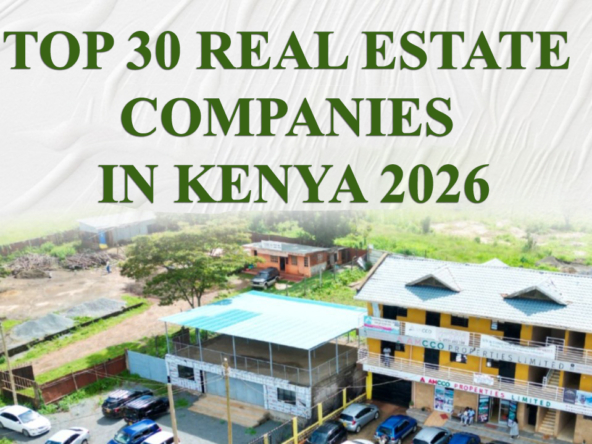Gated residential estates have rapidly become a defining hallmark of suburban growth across Uganda, particularly in highly sought-after areas such as Lubowa, Najjera, Kira, and Bukasa. These meticulously planned developments cater specifically to middle- and upper-class homeowners who are actively seeking more than just a house; they desire enhanced security, access to exclusive communal amenities, and a meticulously controlled living environment. The market for Uganda Gated Communities has experienced an impressive annual growth rate of an estimated 25% since 2021. This robust expansion reflects a powerful convergence of aspirational lifestyle trends among Uganda’s burgeoning middle class and, crucially, genuine and escalating safety concerns within urban centers.
Driving the Demand: Market Dynamics & Key Influences
The robust growth of Uganda Gated Communities is underpinned by several powerful market dynamics that cater directly to the evolving needs and desires of discerning homeowners.
Security Perception: The Ultimate Purchase Driver
In a landscape where crime rates in urban centers remain a significant concern, security perception has emerged as the ultimate purchase driver for Uganda Gated Communities. Buyers are increasingly prioritizing estates that offer comprehensive 24/7 security, stringent access control systems, and robust perimeter fencing. Surveys conducted by the Private Sector Foundation Uganda (PSFU) unequivocally underscore this trend, indicating that a staggering 62% of estate buyers cite security as their primary motivation for purchasing within a gated community. This prioritization of safety provides peace of mind, allowing residents to live and raise families in environments where their well-being is a paramount concern, driving sustained demand for these secure enclaves.
Lifestyle Amenities: Beyond Just a Home
Modern Uganda Gated Communities are designed to offer a holistic lifestyle experience that extends far beyond the confines of individual homes. These developments typically feature an impressive array of communal amenities, including elegantly designed clubhouses, refreshing swimming pools, fully equipped gyms, safe and engaging children’s play areas, and meticulously maintained green spaces. Visionary developers like Pegasus Estates and Bethel Estates have further elevated this offering, incorporating unique features such as themed parks and dedicated jogging tracks. These amenities strongly appeal to young families and health-conscious professionals seeking convenience, recreation, and a sense of community right at their doorstep, significantly enhancing the attractiveness and value proposition of these estates.
Social Prestige & Exclusivity: A Symbol of Status
Beyond the tangible benefits of security and amenities, Uganda Gated Communities also hold significant appeal due to their perceived social prestige and exclusivity. These estates frequently command higher land and unit premiums, often up to 30% above comparable properties in open-market areas. This premium is willingly paid by buyers who view ownership within such communities as a powerful status symbol, reflecting upward mobility and an aspirational lifestyle. The controlled environment, coupled with the curated community, fosters a sense of exclusivity that further solidifies their desirability, making them a top choice for those seeking not just a home, but a distinct social statement in Uganda’s evolving real estate landscape.
Navigating the Framework: Regulatory & Planning Considerations
As Uganda Gated Communities continue their rapid expansion, navigating the existing regulatory and planning frameworks becomes crucial for sustainable development and harmonious living.
Estate Governance: Addressing Legal Ambiguities
One of the most critical challenges facing Uganda Gated Communities has been the historical absence of clear, comprehensive legal frameworks governing estate management. This vacuum has frequently led to internal disputes over various crucial aspects, including the allocation and collection of service charges, precise maintenance responsibilities for communal areas, and the enforcement of estate rules. In a proactive response to these challenges, the Ministry of Lands drafted the pivotal Estate Management Regulations in 2024. These regulations aim to standardize by-laws, clarify the duties of resident committees, and provide robust mechanisms for dispute resolution, thereby bringing much-needed order and legal clarity to the governance of these rapidly growing communities.
Infrastructure Service Levels: Ensuring Self-Sufficiency
Developers of Uganda Gated Communities bear a significant responsibility for ensuring the reliable provision of essential utilities, a factor critical to maintaining the estates’ appeal and functionality. This often includes implementing robust borehole water systems, installing reliable backup generators to counter inconsistent grid power, and establishing efficient waste management services. In light of ongoing inconsistencies in supply from the National Water and Sewerage Corporation (NWSC), many leading estates have gone further, investing in their own independent water reservoirs and even sophisticated treatment facilities. This commitment to self-sufficiency in essential services is a major differentiator, enhancing the quality of life for residents and protecting property values within these planned communities.
Overcoming Roadblocks: Key Challenges & Mitigating Risks
Despite their rising popularity, Uganda Gated Communities face specific challenges and inherent risks that require diligent management from developers and residents alike.
Service Charge Conflicts: The Cost of Amenities
A prevalent challenge within Uganda Gated Communities revolves around service charge conflicts. Reports consistently show that escalating service fees, often rising by 10–15% annually, frequently lead to significant resident pushback and, in some cases, even legal challenges. A notable example is the ongoing court cases involving the Luxor Estate in Kira, highlighting the complexities and disputes that can arise when residents feel the charges are opaque or disproportionate to the services received. Transparent financial reporting, clear communication, and robust governance structures are essential to mitigate these conflicts and ensure the long-term financial health and resident satisfaction of these estates.
Quality Assurance: The Race Against Standards
The rapid pace of construction driven by intense demand for Uganda Gated Communities has, on occasion, resulted in issues of substandard materials and infrastructure failures. Reports of collapsing perimeter walls, malfunctioning sewage lines, and other structural defects underscore the critical need for rigorous quality control processes throughout the development lifecycle. Developers must implement stringent oversight, regular inspections, and adhere to the highest building standards to ensure the long-term durability and safety of their projects. Prioritizing quality over speed is paramount for protecting brand reputation and fostering buyer confidence in the rapidly expanding market for Uganda Gated Communities.
Exclusion Concerns: Balancing Growth with Social Equity
While Uganda Gated Communities offer undeniable benefits to their residents, critics frequently raise concerns about their potential to exacerbate social segregation. By creating exclusive enclaves, these developments can inadvertently deepen social divides and concentrate resources, potentially straining existing public infrastructure in surrounding areas. There’s an ongoing debate about whether the diversion of resources into these private developments detracts from wider community development initiatives. Addressing these critiques responsibly, perhaps through integrated planning and community engagement, is a growing consideration for the sustainable and socially equitable growth of the Uganda Gated Communities sector.
Private Sector Innovation: Pushing Boundaries for Better Living
The private sector is at the forefront of innovating within the Uganda Gated Communities space, introducing solutions that enhance management, promote sustainability, and address social critiques.
Community Management Platforms: Digitalizing Efficiency
In response to the challenges of estate governance and resident communication, tech solutions are emerging to revolutionize management within Uganda Gated Communities. Platforms like EstateLink offer residents intuitive digital portals for seamless service fee payments, efficient submission of maintenance requests, and timely delivery of community announcements. By centralizing these critical functions, such platforms significantly improve transparency, enhance operational efficiency, and streamline communication between residents and estate management. This digitalization fosters a more organized and responsive living environment, contributing positively to resident satisfaction and the overall reputation of these communities.
Green Estate Designs: Sustainability as a Core Value
Leading developers within the Uganda Gated Communities sector are increasingly integrating sustainable design features as core values, moving beyond mere aesthetics. This includes widespread adoption of solar street lighting, which reduces energy costs and enhances security, and efficient rainwater harvesting systems that bolster water independence. Furthermore, the establishment of small-scale waste recycling plants within estates promotes responsible waste management and reduces environmental impact. These green initiatives not only align with global sustainability trends but also result in lower operational costs for residents, enhancing the long-term appeal and value of these eco-conscious communities.
Mixed-Income Models: Fostering Inclusivity
To actively address the critique of exclusivity and promote greater social equity, some visionary developers are pioneering mixed-income models within Uganda Gated Communities. This involves allocating a specific percentage—for example, 20%—of units for lower-income buyers at subsidized rates, often in strategic partnerships with non-governmental organizations like Habitat for Humanity. These models demonstrate a commitment to social responsibility, helping to diversify the resident base and ensure that the benefits of well-planned communities are shared more broadly. This approach can also improve relations with surrounding communities and mitigate regulatory hurdles related to social impact.
Strategic Investor Implications: Maximizing Returns & Social Impact
For investors, the booming market of Uganda Gated Communities presents unique opportunities, but also necessitates a strategic approach that balances financial gains with broader social and environmental considerations.
Premium Margins: Justifying the Investment
Well-managed Uganda Gated Communities can command significant financial benefits. These estates often achieve impressive land price premiums of 20–30% compared to conventional developments, reflecting their enhanced security, amenities, and exclusivity. Furthermore, they can yield attractive rental returns, typically ranging from 8–10%. However, investors must prudently budget for ongoing estate management costs and allocate funds to a reserve fund for future capital expenditures. These investments are crucial for maintaining the high standards and appeal that justify the premium margins and ensure long-term profitability.
Social License to Operate: Building Community Trust
For any large-scale development in Uganda Gated Communities, securing a “social license to operate” is as crucial as obtaining legal permits. Engaging local communities through genuine employment opportunities during construction and operation, and investing in surrounding public infrastructure (e.g., upgrading local roads, supporting nearby schools), fosters invaluable goodwill. This proactive community engagement not only enhances the developer’s reputation but also significantly reduces potential regulatory hurdles and community resistance, paving the way for smoother project execution and long-term success.
Long-Term Viability: Sustainability as a Cornerstone
To ensure the long-term viability and resilience of investments in Uganda Gated Communities, developers should prioritize sustainable design features and implement robust digital management platforms. Sustainable elements, such as solar power and rainwater harvesting, directly lower operational costs for residents and management alike, making the estates more attractive. Digital management platforms enhance transparency, improve efficiency, and foster stronger community bonds. These forward-thinking approaches appeal to environmentally conscious and tech-savvy buyers, ensuring the estates remain desirable and retain their value over decades.
Conclusion: The Evolving Landscape of Secure Living
Uganda Gated Communities undeniably represent a maturing and highly dynamic market segment, adeptly balancing the compelling demands for enhanced security, modern lifestyle amenities, and a sense of exclusivity. As regulatory frameworks continue to solidify—notably with the anticipated enactment of Estate Management Regulations in mid-2025—and as visionary developers increasingly adopt sustainable and more inclusive models, these estates are poised for continued and robust growth. Key indicators to closely watch include the successful implementation of the new Estate Management Regulations and the sustained uptake of mixed-income models, which will collectively shape a more equitable and resilient future for secure, planned living in Uganda.




